“I think the bicycle has done more to emancipate women than anything else in the world.” -Susan B. Anthony
The bicycle presented women with the mobility and autonomy to go great places, both literally and metaphorically. In the early to mid 1800’s, it was rare yet possible to see women riding early versions of the bicycle—first the hobby horse (1819) and then the velocipede (1865). Given the engineering of these machines, it was difficult for women to mount and ride while wearing their skirts. Those that did battle the all-male arena were seen not only as rebellious but scandalous and risqué as well. To avoid “exposing herself to ridicule that the velocipede encouraged” as Andrew Ritchie argued in "King of the Road," it wasn’t until mechanical and social changes had occurred that women's riding became more popular. The tricycle and tandem bicycles were ways that women could make use of the invention, without crossing social boundaries. In other words, women’s mobility was limited in response to the fear of uprising. The tricycle required the more rare, well-maintained roads and the tandems were usually steered by the men. It was with the advent of the safety bicycle in the 1890’s that this idea of independence was accomplished to a greater extent. The frame could allow for a women’s version that had a lower bar to allow for the long skirts that riders had to manage. This demonstrates the co-evolution of the structure of the bicycle with social changes.
A story that exemplifies the turning point in the women's movement for independence, involving the role of the bicycle, begin in 1898. A woman was touring the English countryside on her bike, dressed in the more practical knickerbockers, and stops at an inn for a refreshment. The owner will not allow the woman to be served because of her costume, and rather, escorts her to a lowly public bar across the way. The female cyclist is not very happy with this behavior and brings the case to court. She lost the case, but began a movement in freedom of dress, choice and expression for women.
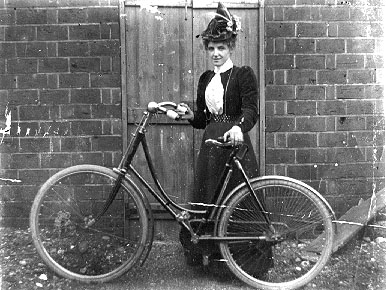 Estatevault.com
Estatevault.com
This idea of women riding bicycles, especially unchaperoned by a man, was revolutionary in breaking down social barriers while maintaining (although some may object, as we shall find out) social standings. The bicycle allowed women to leave the house they were otherwise bound to, and escape for a day, abandoning their normal routine of domestic chores. Many of the health complaints of females demonstrating anxiety and ill-tempered mannerisms now disappeared. Many suspected that the fresh country air and some exercise was the necessary cure—a progressive idea for the time. Along with the literal increase in strength and wellness, the stigma of women’s fragility and weakness also dissipated. The ability to steer and balance the bike was a skill that made it difficult to maintain prior conceptions of a female’s dependent and weak nature. Along with this, women were encouraged to maintain their own machines. Of course this entailed keeping their bicycle clean as to maintain a neat and tidy dress. Additionally, it allowed for the corresponding autonomy making it difficult to stop woman from biking alone or with a female friend, into the country side safely.
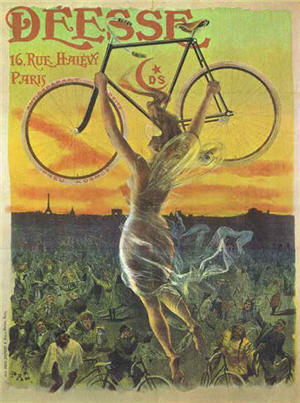 blog.cleveland.com
blog.cleveland.com
Despite the changes that the bicycle created, many traditions and mentalities had remained steadfast. For example, even though women could leave the house, they were still expected to complete all of their daily chores. Additionally, women were expected to maintain their long skirts and extensive dress much into their period of cycling. Davidson says that women should dress for “comfort, ease and safety” while still maintaining that it was “perfectly possible for a lady to look graceful, elegant and womanly in the saddle.” I would like to believe that both historical accounts and mindsets at that time played down the power of the bicycle and played up the maintaining of femininity in order to quell fears of women as a social threat. This quote is support for this theory as it comforts men of their continued hierarchical status and continual femininity of their wife despite the addition of the bicycle.
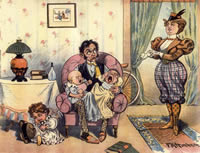
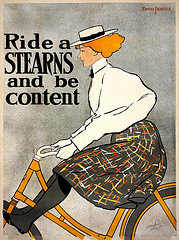 www.wright.edu
www.wright.edu
'"If she had ridden her bicycle into new fields, becoming in the process a new creature, it has been gradually and unconsciously. She did not have to be born again in some mysterious fashion, becoming a strange creature, a ‘new woman.’ She is more like the ‘eternal feminine,’ who has taken on wings and who is using them with an ever increasing delight in her new power.” -Munsey (1986)
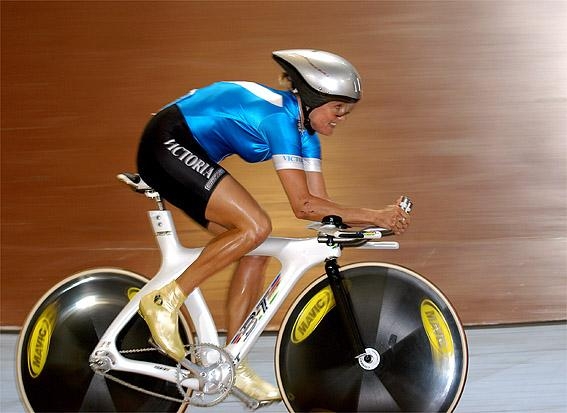 www.flickr.com
www.flickr.com
back to the bicycle home page
